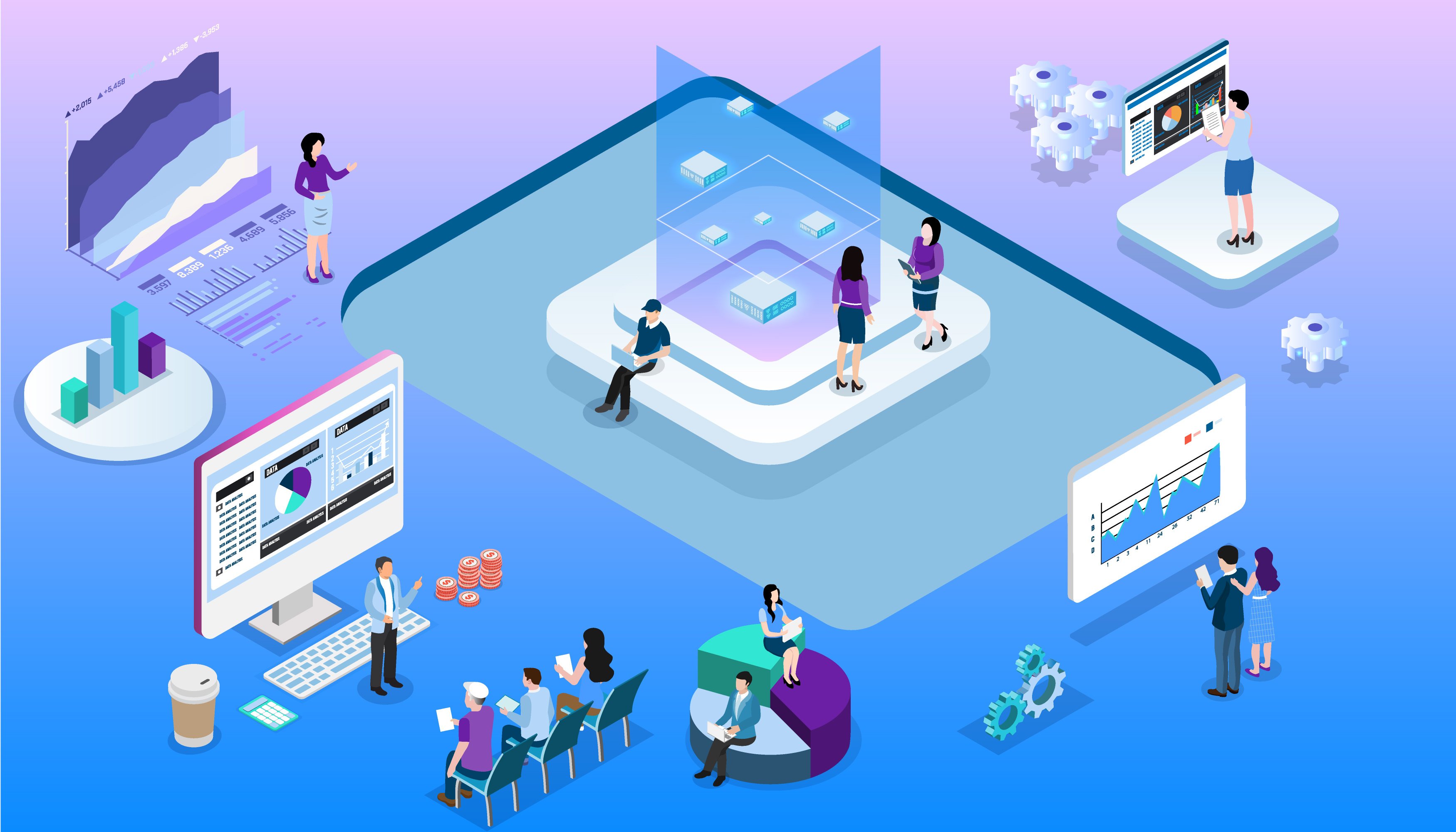
Integration may not be the first step to enabling people analytics, but it’s a critically influential one. Without the right integration to serve your purpose, analytics just won’t be possible.
It’s like trying to make chicken soup from many ingredients—but the ingredients are scattered in different people’s cupboards throughout your neighborhood. First, you have to gather them all together in your own kitchen. Then you must prepare each ingredient in a specific way before dropping it into your pot. Only after that can you bubble up your delicious broth.
Data integration is a bit more complex than making chicken soup. But it can be just as satisfying if it gives you the connections you need.
Data integration is combining data from multiple source systems to create unified sets of information for both operational and analytical uses.
Advanced people analytics programs rely on the intersection of data from HR, operations, and external sources. This means organizations that wish to use analytics need a data strategy that promotes the integration and use of structured and unstructured data from internal and external sources.
Why people analytics?
Strong decision-making and adaptability are two of the qualities essential for organizational preparedness and resilience. Firms need these human qualities not just in times of crisis, but continually, as the Deloitte Human Capital trends 2021 report notes.
Your most challenging workforce decisions will always depend on a synthesis of information and the good judgment of your business leaders, HR experts, and stakeholders. And the more readily you can access relevant evidence and timely workforce information, the more informed will be the quality of your decisions. This is where people analytics proves useful.
People analytics gathers data sets on different aspects of your workforce to help you understand issues and get informed. Depending on what you choose to examine, people analytics can help you:
- Evaluate your HR processes and systems. What works? What doesn’t?
- Understand how workers affect operations and business value. You may need to cut some labor costs while redeploying other employees.
- Discover insights and unexpected trends about your workforce.
- Develop better hiring practices for diversity and inclusion.
- Be more aware of employee needs and use that new awareness to draft new policies or allocate resources to address them.
Defining your goal for people analytics
The first step in people analytics is therefore to identify a focus for the analytics. What’s your most pressing problem or need that aligns with business goals? What aspect of your workforce do you need to understand better to drive improvements?
For example, would you like to
- Apply data to recruiting, to reduce hiring time and attract better quality candidates in a tight labor market?
- Listen more closely to your employees, to understand their day-to-day productivity challenges? With competition for labor, the employee experience has become much more important.
- Identify meanings in data patterns about who stays and who goes? Retention is a critical issue. Some 4.5 million Americans quit or changed jobs in March 2022.
- Decide whether to enforce a return to the office or develop a hybrid work policy? While some businesses insist on return-to-office plans—consider Elon Musk’s dictates to his Tesla workers to return to the office or be fired—others are developing hybrid policies to help combat a high anticipated employee turnover rate.
These are just some examples of the many questions you may ask to direct your people analytics project.
Once you identify a focus, you can consider what data sets you will need for analysis. You can then see which systems the data sets come from (on-premises systems? Cloud apps? Private or public cloud systems?)—and more often than not, that will lead you to the need to connect different computing systems or platforms.
The integration linchpin
People data may live in many places, including
- human resources information systems (HRIS),
- payroll systems,
- learning management systems (LMS),
- performance management systems,
- applicant tracking systems,
- employee surveys,
- social networks,
- employee portals, and
- talent marketplaces.
Many operational systems are designed mainly for transactional HR needs. They’re not designed for the reporting or analysis needs of people analytics.
For example, you may need to provide control over workflow functions like extract, transform, and load (ETL) to and from other data environments—moving data to or from other data sources. That requires integration.
Or you may need to control how you group data, and how you add or remove elements from a report. Or perhaps you need to build custom datasets to perform statistical operations. That requires integration.
Integration avoids the splintering of data analysis across different HR functions. For example, your Talent Acquisition teams may each hire their own data analyst to build reports, with no access to information in other HR systems, and little insight into how all the data from the different environments fit together.
Based on your initial business or HR goal for your people analytics project, you can strategically integrate the systems you need to enable efficiency in the data flows you require for analysis.
That also avoids the problem of duplicated analysis in different HR teams.
Data integration is a critical early enabler for most forms of people analytics.
You need to get the right systems connected, in an optimal way for your business and analytics project, to capture and organize the precise people data sets you need to inform your strategic workforce decisions.
PhenomᵉCloud is a comprehensive technology solutions provider committed to empowering businesses to overcome challenges, enhance their workforce capabilities, and achieve superior outcomes.

Leave a Comment